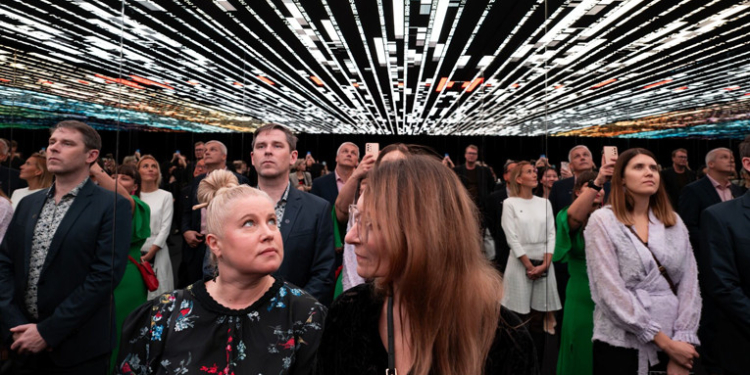As part of the Tartu 2024 European Capital of Culture program, one of Japan’s most renowned artists, Ryoji Ikeda, has opened a unique audiovisual solo exhibition dedicated to Estonians at the Estonian National Museum (ENM). The exhibition features two new works created specifically for the ENM space, exploring the synergy between art, music, and science.
The two pieces, developed in collaboration with the University of Tartu’s Institute of Genomics and the Estonian Philharmonic Chamber Choir, examine the relationship between human DNA data and soundscapes, creating a unique intersection of Estonian science and cultural heritage. “Ryoji Ikeda is known for his large-scale spatial installations often based on scientific data,” explained the exhibition’s curator, Kati Torp. “His ability to blend art with scientific concepts in a visually compelling and meticulous manner is truly remarkable.”
The exhibition opened with an exciting artist talk where Ryoji Ikeda shared his thoughts on the process of creating his works and their meaning. “Through my art, people can find their own answers, and there is no single correct answer. Every person and visitor who views my works finds their own answers. My work makes up only 50 percent; the other 50 percent is created by the audience – art is a dialogue between me and the viewer, allowing them to experience something personal and unique,” said Ikeda.
“The genome data of Estonians has inspired an artwork where visitors walk through a stream of data that represents the history of Estonia. The closer you observe the data flow, the stronger the connection between the research, the collected and displayed themes, which are seen in all ERM exhibitions,” noted ERM director Kertu Saks.
Visitors can expect a multisensory experience that encompasses sight, sound, and thought. The combination of top-level data visualization, immersive soundscapes, and the physical presence of the space leaves a lasting impression on each attendee.
The exhibition features three main works:
- vox aeterna (2024) — a sound installation whose interpretation in Latin means “Eternal Voice”. It consists of various human voices performed by the Philharmonic Chamber Choir.
- the critical paths (2024) — a piece inspired by the research of the University of Tartu Institute of Genomics. It includes a flow of genetic data on LED screens where visitors can walk through the history of humanity.
- data-verse (2019–2020) — Ikeda’s internationally acclaimed installation that offers new and creative ways to present data. The data-verse series highlights the vastness and complexity of data, transforming scientific and numerical concepts into artistic experiences. This piece has previously been exhibited at venues such as the Centre Pompidou in Paris and the Shed Gallery in New York.
Ryoji Ikeda’s solo exhibition will be open at the Estonian National Museum until March 2, 2025.
www.erm.ee
















